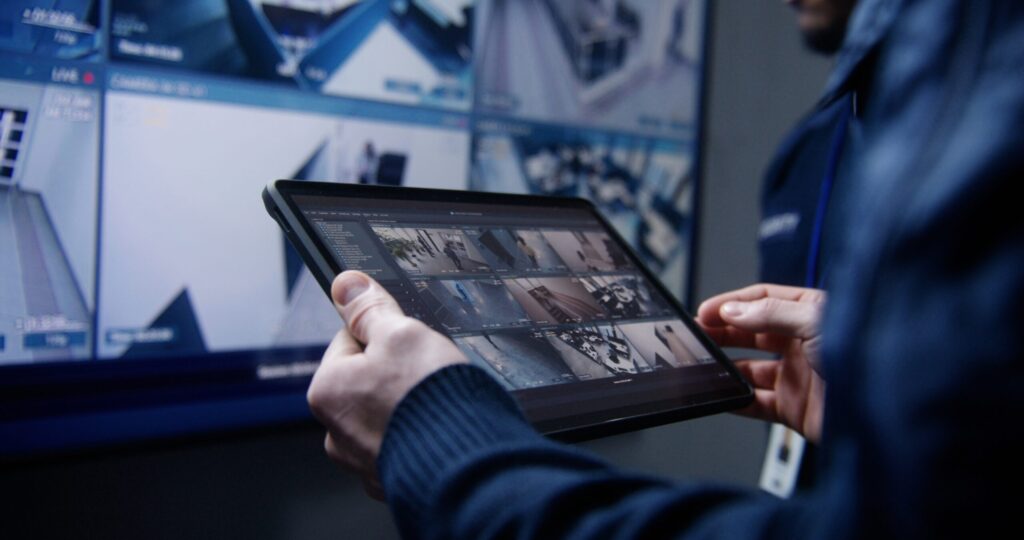Article by Dale Grant – Marketing Coordinator
In terms of security and surveillance, compliance with various regulations and standards is crucial to ensure both legality and reliability. One such regulation that has gained prominence in recent years is the National Defense Authorization Act (NDAA). This legislation has specific implications for security surveillance cameras, dictating what makes a camera NDAA compliant and identifying the types of places that require such compliance.
What is NDAA Compliance?
The National Defense Authorization Act (NDAA) is a U.S. federal law that outlines the budget and policies for the Department of Defense. Part of this law, Section 889, focuses on national security and restricts federal agencies, their contractors, and recipients of federal grants or loans from using equipment and services from certain foreign companies considered to pose a security threat. This has significant implications for the security industry.
NDAA Compliance and Security Surveillance Cameras
Security cameras are a key part of modern security systems, helping to monitor and protect people, property, and information. Because of the NDAA, any surveillance equipment used by federal agencies or in projects funded by the government can’t come from blacklisted companies. This rule ensures that these cameras don’t have hidden vulnerabilities that could be exploited by foreign adversaries.
Places Requiring NDAA Compliance
NDAA compliance is mandatory in several key areas, particularly where national security and federal funding are involved. Here are some of the primary places that require NDAA compliant security cameras:
- Federal Agencies: All U.S. federal agencies must use NDAA compliant equipment. This includes government buildings, military installations, and any other federal properties.
- Government Contractors: Companies that provide products or services to the federal government must ensure that their security equipment is NDAA compliant. This extends to subcontractors as well, creating a broad compliance network.
- Critical Infrastructure: Facilities considered part of the nation’s critical infrastructure, such as power plants, water treatment facilities, and transportation hubs, often require NDAA compliant equipment due to the potential national security implications of a breach.
- Educational Institutions: Universities and schools that receive federal funding for research or security enhancements must use NDAA compliant surveillance systems to protect their facilities and data.
- Healthcare Facilities: Hospitals and healthcare providers that receive federal funds, especially those involved in sensitive research or handling classified information, must ensure their security systems are compliant.
- Financial Institutions: Banks and financial institutions that fall under federal regulations and protections may also need to adhere to NDAA compliance for their surveillance systems.
- Public Safety and Law Enforcement: Police departments and other law enforcement agencies that rely on federal grants or operate under federal oversight must use compliant equipment to ensure the integrity of their surveillance operations.

What Makes a Security Camera NDAA Compliant?
For a security camera to be NDAA compliant, it must meet the following criteria:
- Origin of Manufacture: The camera must not be manufactured by any of the companies listed in Section 889 of the NDAA. This includes avoiding components and subcomponents that originate from these companies.
- Component Verification: Even if the camera is assembled by a company not on the list, it must be verified that none of the internal components (such as chips, software, or firmware) are sourced from the restricted entities.
- Supply Chain Transparency: Manufacturers must provide clear documentation and supply chain transparency to prove that their products are free from any prohibited components.
- Testing and Certification: NDAA compliant cameras often undergo rigorous testing and certification processes to ensure they meet the required standards. This can include cybersecurity assessments to identify and mitigate potential vulnerabilities.
NDAA compliance is critical when installing security cameras, especially in areas connected to national security or federal funding. Knowing what makes a camera compliant and following those standards is essential for keeping surveillance systems secure.
For more information regarding NDAA Compliance, please visit https://www.congress.gov/

